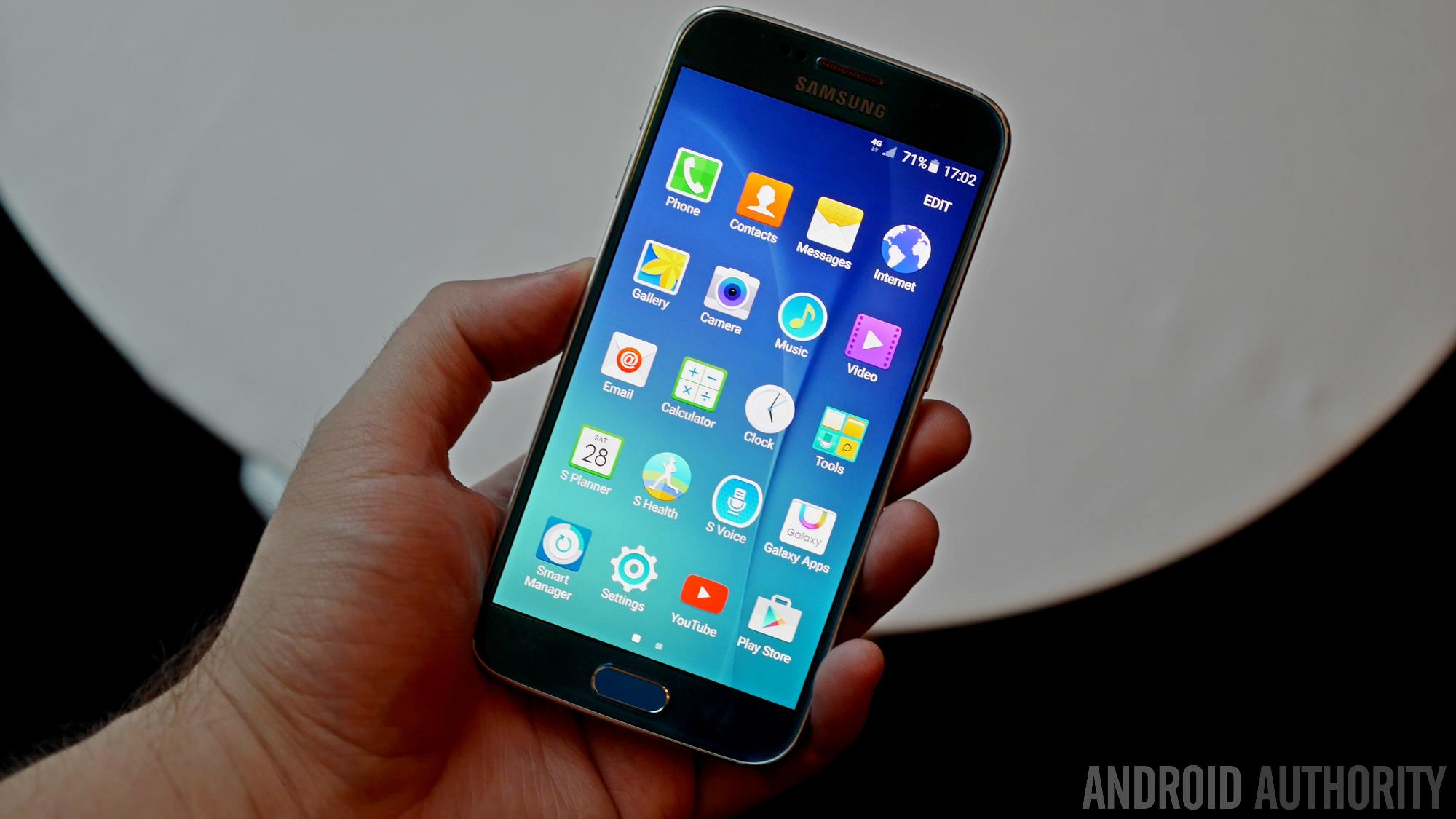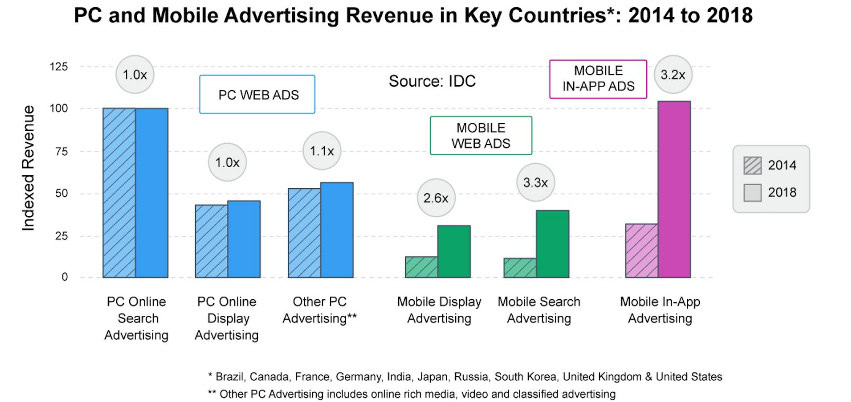Affiliate links on Android Authority may earn us a commission. Learn more.
Freemium models and in-app ads spur growth in mobile app revenue
Published onApril 6, 2015

IDC and App Annie have just published their research on the past and future trends for mobile app advertising and monetization. The data finds that mobile app and advertising revenue is surging, up on average around 70 percent between 2013 and 2014 and further growth is forecast over the next few years.
Continual growth in the smartphone and tablet markets are the leading contributor to the increase in app audience numbers and revenue these past couple of years, but it also turns out that developers earned 20 percent more per device from app advertising in 2014 than they did in 2013.
As you have probably noticed, freemium and in-app ad supported models are continuing to rise in popularity and profitability. In-app ad revenues and app purchases were up 70 percent between 2013 and 2014, while web based advertising revenue grew by 50 percent and search advertisement revenue grew by 60 percent. All of which far outstripped the growth in PC advertising. However, this growth has come at the expense of more traditional upfront cost applications, which are dwindling in popularity and revenue generation. It seems that users generally prefer the “free” appeal of these app types.49% of publishers surveyed use paid advertising within their apps, up from 42% last year
The clear success of the freemium and ad supported models is no coincidence, the majority of developers questioned are looking to earn revenue through either paid downloads or in-app purchases, followed by almost 50 percent looking for in-app ads to generate some form of revenue. Only around 12 percent of apps aim to cater for an external service, such as Netflix or online banking, and less than 10 percent of apps are designed to support transactions outside of the app, such as purchases through eBay or booking a taxi via Uber.
As far as freemium apps are concerned, over 55 percent of app developers surveyed earn revenue by offering additional functionality for cash. This could be in the form of extra lives in a game or premium features for paying users. User experience comes in second with around 40 percent of apps monetizing some aspect of this, while paying for app usage time ranks just below 20 percent. The free trial model saw some growth last year, but still remains the least popular method for luring consumers in.
Most freemium apps only see between 0 and 5% of monthly active users make at least one in-app purchase.
Although both of these models are proving successful, there are some significant differences in the trends between countries. The US and Japan are the most lucrative markets, while Russia, Brazil and India are now growing at the same rate. Advertising generates the most revenue in India, the US and UK, while app purchases are far more popular in Japan, Russia, Germany and South Korea.
Turning to the future, IDC and App Annie expect even stronger growth in mobile based revenue. In-app advertising appears set for a threefold increase in revenue, as does mobile search advertising. Mobile display advertising, such as those seen on web pages, is expected to rise by a similar 260 percent.

In turn, additional apps and investment into mobile will only make the platform more compelling for users, but it’s the emergence of wearables and growing mobile markets that are expected to drive these trends. Compared with expected increases in the PC space, mobile is positively booming for developers and doesn’t show any signs of slowing down soon.